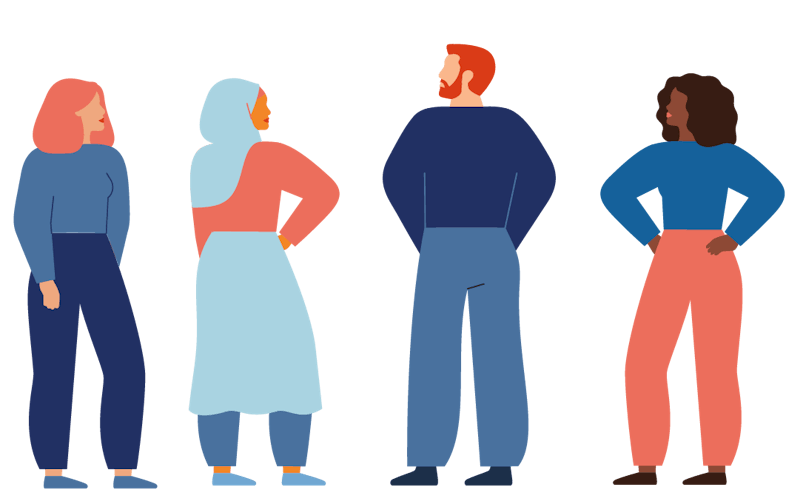That behavior can seem harmless but causes discomfort. It can also be violent, driven by prejudice and hatred.
Examples of this behavior are
- Prejudice
- Microaggression
- Honour violence
- Hate crimes
People in marginalized groups often have to tolerate behaviors that others do not.

That behavior can seem harmless but causes discomfort. It can also be violent, driven by prejudice and hatred.
Examples of this behavior are
Marginalization is when a person or group is sidelined and moved away from what others have easier access to.
People in marginalized groups may find it harder to access basic services and opportunities than others.
Marginalized groups are immigrants, refugees, queer people, the poor, the disabled, and others.
People in the same group can be marginalized in different ways.
Prejudice is judging someone due to false beliefs, ignorance, or fear.
People in marginalized groups are more likely than others to experience prejudice.
When prejudice against a group is considered normal, the group is more likely to be harassed. Stimuli so often develop into violence being used against the group. It is also less likely that the group will receive assistance. That's why it is important to fight prejudice from the start.
What is prejudice?
Stereotypes are generalizations about all individuals who belong to a certain group. They can be positive (all X are intelligent) and negative (all X are thieves), sometimes at the same time. They are simplified and often prejudiced versions of real people in a group. They can be based on rumours, news coverage, and manifestations (for example, in shows and films).
Microaggression is an Icelandic translation of the English word "microagression." Microaggression is an everyday prejudice. This means that they can appear without anyone noticing except the victim himself.

Honor violence is when someone uses violence to defend the "honor" of the family, often a close relative. Honour violence oftentakes place in marginalised groups and is directed against other marginalised groups, especially women and queer people.
Hate crime is an umbrella term. It covers crimes driven by hatred of a victim's group.
Hate crimes are divided into three categories: violence, hate speech and discrimination.
Here are some examples to think about.